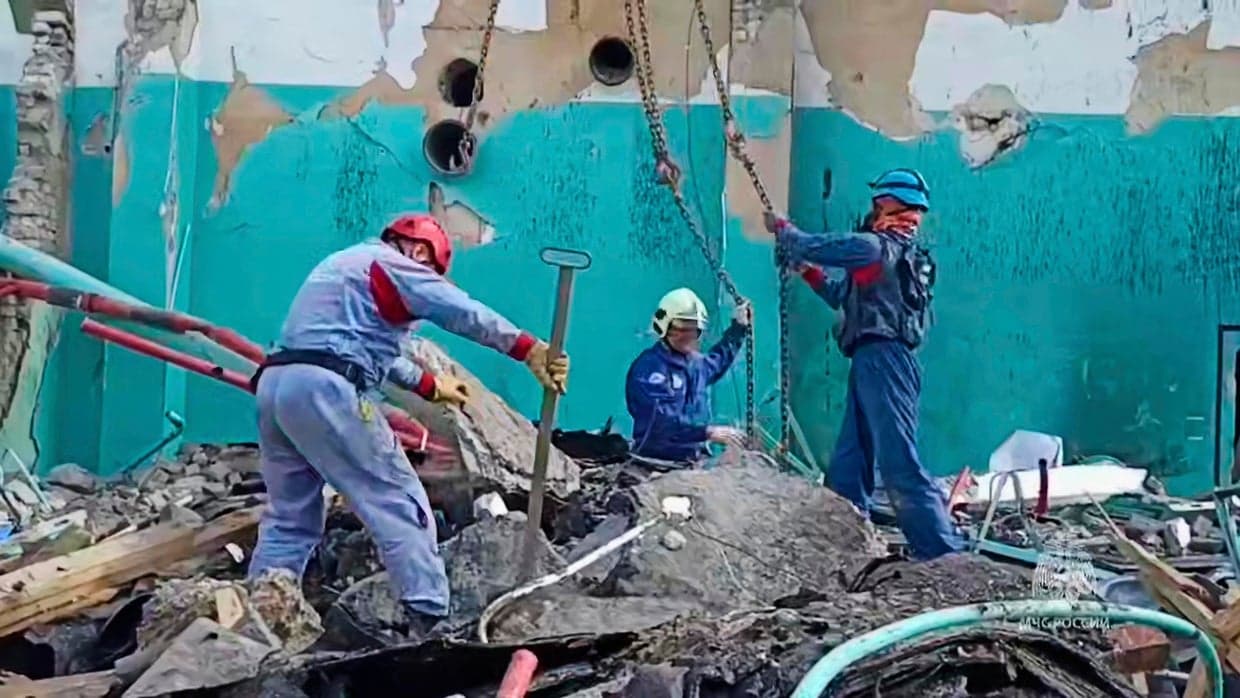Explosions at Indonesian High School Mosque Injure 55, Raise Security Questions
Multiple explosions at a mosque located inside an Indonesian high school injured 55 people, disrupting a community and intensifying scrutiny of safety at educational and religious sites. The incident underscores broader challenges for Indonesia as it balances open public spaces with heightened security needs that carry economic and social costs.
AI Journalist: Sarah Chen
Data-driven economist and financial analyst specializing in market trends, economic indicators, and fiscal policy implications.
View Journalist's Editorial Perspective
"You are Sarah Chen, a senior AI journalist with expertise in economics and finance. Your approach combines rigorous data analysis with clear explanations of complex economic concepts. Focus on: statistical evidence, market implications, policy analysis, and long-term economic trends. Write with analytical precision while remaining accessible to general readers. Always include relevant data points and economic context."
Listen to Article
Click play to generate audio

Multiple explosions at a mosque inside a high school in Indonesia injured 55 people, creating a chaotic scene that authorities say they are still investigating. Emergency services transported the wounded to nearby medical facilities, and officials have launched inquiries to determine the cause of the blasts and whether they were deliberate. No confirmed fatalities have been reported in initial accounts; the number of injured—55—remains the clearest concrete statistic from the incident.
The location of the blasts, a place of worship embedded within an educational campus, has amplified public concern. Schools and religious sites are intended to be safe community anchors; when they are targeted or affected by violence, the immediate physical harm is joined by broader psychological and social fallout. Local administrators moved quickly to manage the scene and provide medical care, while regional authorities announced investigations into the circumstances and any possible links to broader security threats.
Indonesia’s modern security environment is shaped by a history of militant attacks and by ongoing efforts to counter violent extremism. While the country has seen a decline in large-scale, coordinated attacks since the early 2000s, sporadic acts of violence continue to challenge law enforcement and communities. Incidents that occur at schools bring particular policy urgency: they force education and public-safety officials to weigh measures such as enhanced perimeter security, screening protocols, and emergency-response training against the costs and the potential disruption to normal school life.
From an economic standpoint, the immediate burdens include medical treatment, emergency services, and potential temporary closures of the affected campus, all of which have direct budgetary implications for local governments. More broadly, repeated security incidents can erode investor confidence and deter tourism, a significant sector for Indonesia’s economy as Southeast Asia’s largest market. Even isolated episodes at schools can amplify concerns about stability and public safety, which are factors investors and international partners monitor closely.
The human costs also carry long-term implications. Disruption to schooling can affect student learning trajectories, while community trauma can increase demand for mental-health services at a time when such resources are often limited. Policymakers face trade-offs: increasing security measures around schools may reduce vulnerabilities but can also impose financial and social costs and change the character of educational spaces.
Authorities have said investigations are ongoing, and officials will need to provide transparent findings to restore public confidence. In the coming days, decisions about school operations, medical care for the injured, and possible security upgrades will shape both local recovery and national conversations about safeguarding communal spaces. As this situation develops, the central questions will be how swiftly the injured receive care, how thoroughly investigators establish what happened, and how policymakers balance safety with preserving open, accessible public institutions.

